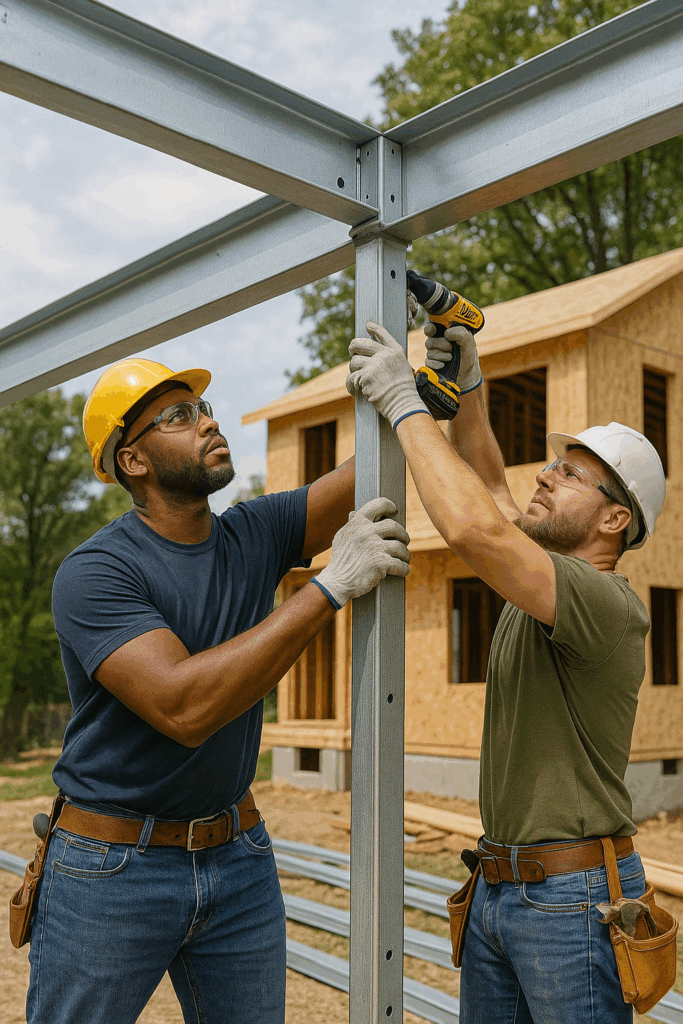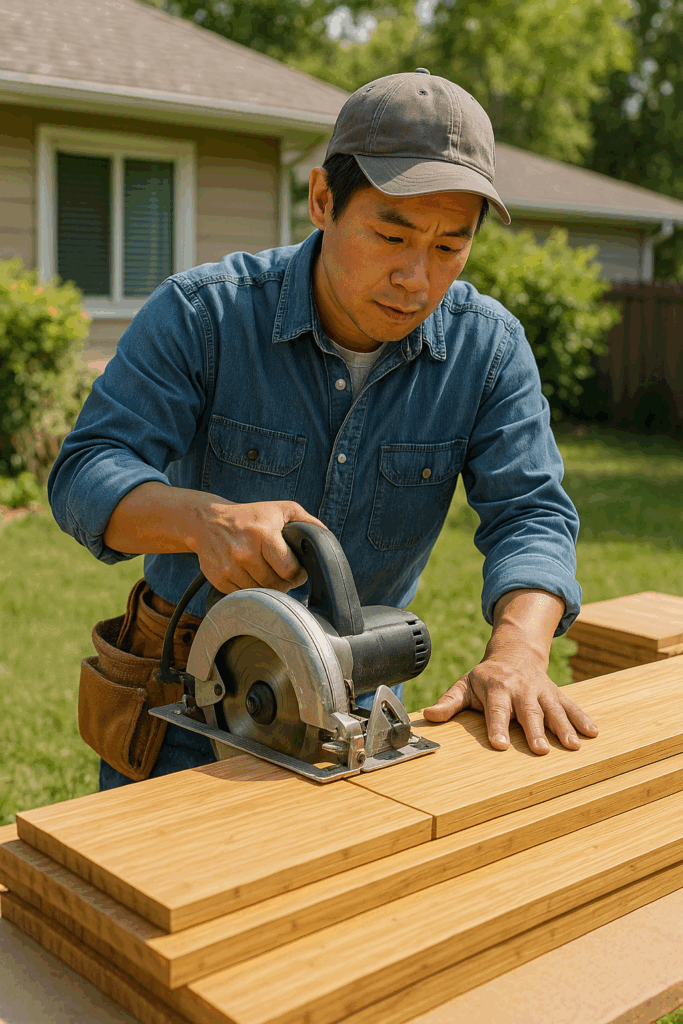Latest Trends in Sustainable Building Materials – Spotlight on bamboo, recycled steel, and low-VOC composites driving green construction innovation.

Sustainable building materials are more important than ever for homeowners looking to reduce their environmental impact, save on energy bills, and invest in healthy indoor living. In this post, we’ll explore three trending eco-friendly materials—bamboo, recycled steel, and low-VOC composites—that are driving green construction innovation. By the end, you’ll understand how each material can improve your home’s performance, durability, and indoor air quality while also contributing to a healthier planet.
Bamboo: Fast-Growing and Renewable
Bamboo has gained popularity among homeowners for its rapid renewability and impressive strength. Unlike traditional hardwoods, bamboo matures in 3–5 years, making it an environmentally responsible choice. As a flooring option, bamboo delivers a similar aesthetic to hardwood but often at a lower price point. Additionally, bamboo’s natural resistance to moisture and pests makes it suitable for kitchens and bathrooms, though proper sealing is still important.
Benefits for Homeowners
- Affordability: Bamboo flooring often costs 20–40% less than oak or maple, helping you stay on budget.
- Durability: Strand-woven bamboo can match or exceed the hardness of oak, resisting dents and scratches.
- Style Versatility: Available in natural, carbonized (darker), and stained finishes, bamboo matches various interior designs.
Installation Tips
If you’re tackling DIY installation, choose high-quality tongue-and-groove planks designed for floating floor installation. Ensure your subfloor is level and keep a ½-inch gap around walls for natural expansion. For walls and accent pieces, bamboo panels can add texture to your living room or bedroom; simply measure, cut with a fine-toothed blade, and adhere with a recommended eco-friendly adhesive.

Recycled Steel: Strength and Long-Term Savings
Recycled steel is emerging as a go-to structural material in green builds and home remodels. When you opt for recycled steel beams or framing, you’re choosing 100% recycled content that reduces demand for virgin steel production, which is energy-intensive. Recycled steel offers exceptional durability, resisting pests, mold, and fire. Over the life of your home, steel framing can lower maintenance costs and potentially reduce insurance premiums due to its fire resistance.
Key Advantages
- Structural Integrity: Steel doesn’t warp, split, or shrink like wood, ensuring straight walls and stable supports.
- Sustainability: Choosing recycled steel diverts metal from landfills and reduces mining.
- Cost Considerations: While initial costs may be 10–15% higher than traditional lumber, long-term savings in maintenance can offset this.

Installation Guidance
Work with a qualified contractor experienced in steel framing. They’ll use specialized cutting tools and fasteners designed for steel. If you’re upgrading a portion of your home, consider steel beams to open up wall sections without needing bulky wood posts. Always verify local building codes and ensure proper insulation against thermal bridging, perhaps by adding rigid foam insulation to steel studs.
Low-VOC Composites: Healthy Indoor Air
Indoor air quality is vital for homeowner health, especially if you or your family suffer from allergies or respiratory issues. Low-VOC (Volatile Organic Compound) composites, such as paints, adhesives, and paneling, release fewer harmful chemicals into the air. Traditional paint can emit VOCs at levels that contribute to headaches and long-term health risks. With low-VOC options, you enjoy vibrant colors and durable finishes without sacrificing indoor air.
Homeowner Benefits
- Improved Air Quality: Lower VOC levels translate to fewer off-gassing odors and reduced risk of irritations.
- Easy Application: Low-VOC products often have similar drying times and finishes as standard options.
- Environmental Impact: Many low-VOC products incorporate recycled content or sustainable binders.

Best Practices
When repainting or finishing your home, select products labeled “Low-VOC” or “Zero VOC” and look for third-party certifications like GREENGUARD. Ventilate the area by opening windows and using fans, even when using low-VOC paints. For composite panels, choose those made from recycled fibers or bio-based resins. Always follow manufacturer instructions for curing times to ensure maximum performance.
Bringing It All Together
By integrating bamboo, recycled steel, and low-VOC composites into your remodel or build, you not only reduce your environmental footprint but also create a healthier, longer-lasting home. Bamboo adds warmth and resilience underfoot, recycled steel provides a robust framework that stands the test of time, and low-VOC composites ensure cleaner indoor air. As you plan your next home upgrade, consider these sustainable materials not only for their eco-benefits but also for the long-term savings and improved living conditions they offer.
Ready to make greener choices? Start by researching local suppliers for bamboo flooring or recycled steel, and look for certified low-VOC paint lines. Your home—and the planet—will thank you!